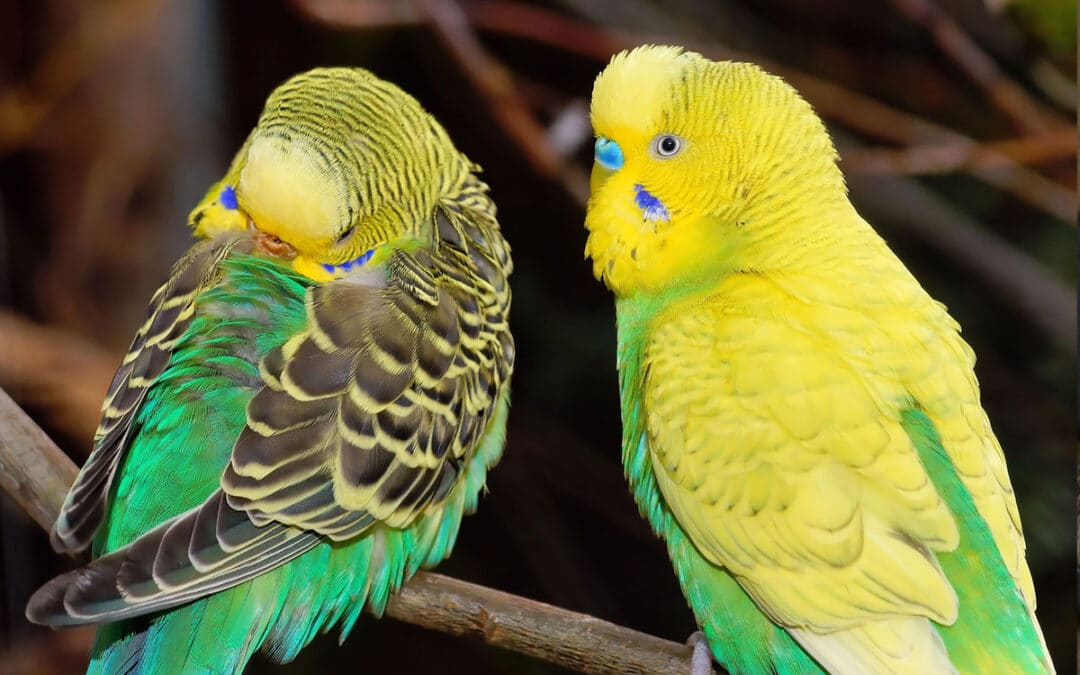Feathering changes can occur in budgies, and it’s important to understand the causes and how to address them. In this article, we will discuss the different types of feathering changes, the possible causes, and how to address them.
Seasonal Changes
One of the most common causes of feathering changes in budgies is the change of seasons. During the fall and winter, days are shorter and there is less sunlight, which can cause a reduction in the production of feathers. Budgies may also moult and lose feathers as the seasons change. These feathering changes are normal and usually nothing to worry about.
Vitamin Deficiency
Another possible cause of feathering changes in budgies is a deficiency in specific vitamins and minerals. A lack of vitamin A, for example, can cause feather loss and thinning, as well as dry and flaky skin.
A lack of vitamin D3 can also cause feather loss, as well as weak bones and muscle weakness.
A lack of vitamin E can also cause feather loss and thinning, as well as a weak immune system.
Providing a balanced diet with a variety of fruits, vegetables, seeds and a balanced pellet diet is important to cover all the nutritional needs of the bird, also a supplementation with vitamins can also help if a deficiency is suspected.
High vitamin foods for budgies:
- Dark leafy greens (spinach, kale, collard greens, etc) are high in vitamin A, which is important for feather growth and good eyesight.
- Carrots are also a great source of vitamin A, as well as beta-carotene, which is converted to vitamin A in the body.
- Sweet potatoes are high in vitamin A and beta-carotene.
- Squash is also high in vitamin A, as well as vitamin C, which is important for a strong immune system.
- Fruits such as apricots, papaya, and cantaloupe are good sources of vitamin A.
- Seeds such as sunflower seeds are high in vitamin E, which is important for feather growth and a healthy immune system.
- Nuts such as almonds and hazelnuts are also good sources of vitamin E.
- Fish such as salmon, sardines, and herring are rich in vitamin D3, which is important for feather growth and strong bones.
Disease or Parasites
Feathering changes can also be caused by disease or parasites. Feather mites, for example, can cause feather loss and itching. Similarly, lice can cause feather loss and itching.
Other diseases such as psittacine beak and feather disease (PBFD) and Polyoma virus can also cause feather loss and abnormal feather growth. If you suspect that your budgie has a disease or parasite, it’s important to consult with an avian veterinarian for diagnosis and treatment.
How to Keep Your Budgie’s Feathers Healthy
Feathers are an important aspect of a budgie’s overall health and well-being. Proper nutrition, grooming, and care are essential for maintaining healthy feathers. Here are a few tips on how to keep your budgie’s feathers in top condition:
- Provide a balanced diet – A balanced diet with a variety of fruits, vegetables, seeds, and a balanced pellet diet is essential for maintaining healthy feathers. A diet that is lacking in essential vitamins and minerals can cause feather loss or abnormal feather growth.
- Provide adequate lighting – Budgies need access to natural sunlight or UVB lighting to produce Vitamin D3, which is essential for feather growth. Make sure that your budgie’s cage is placed in a location where it has access to natural sunlight or provide a UVB light source for your pet.
- Groom your budgie regularly – Regular grooming helps to remove loose and damaged feathers, and encourages healthy feather growth. Gently brush your budgie’s feathers with a soft-bristled brush, and keep a close eye on their feathers for any signs of mites or lice.
- Provide plenty of exercise – Exercise is important for maintaining healthy feathers, as it promotes blood flow and helps to distribute essential nutrients throughout the body. Provide plenty of toys and perches for your budgie to play and climb on.
Conclusion
Feathering changes in budgies can be caused by a variety of factors, including seasonal changes, vitamin deficiencies, and disease or parasites. It’s important to understand the possible causes and how to address them.
By providing a balanced diet, monitoring for signs of illness and parasites, and consulting with an avian veterinarian if necessary, you can help ensure that your budgie maintains healthy and vibrant feathers.

